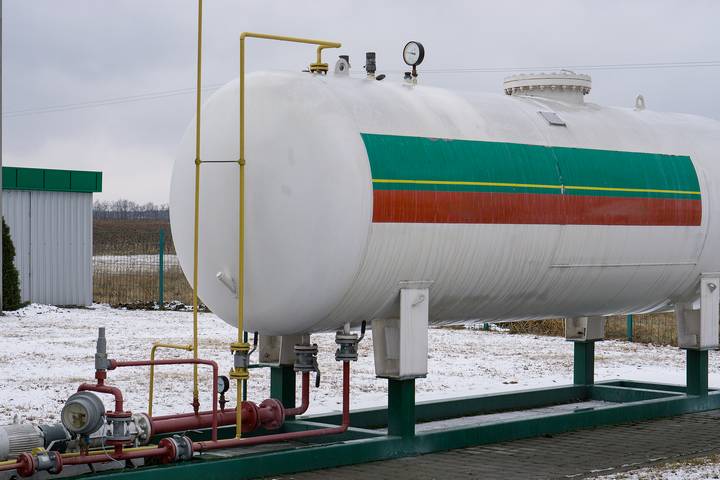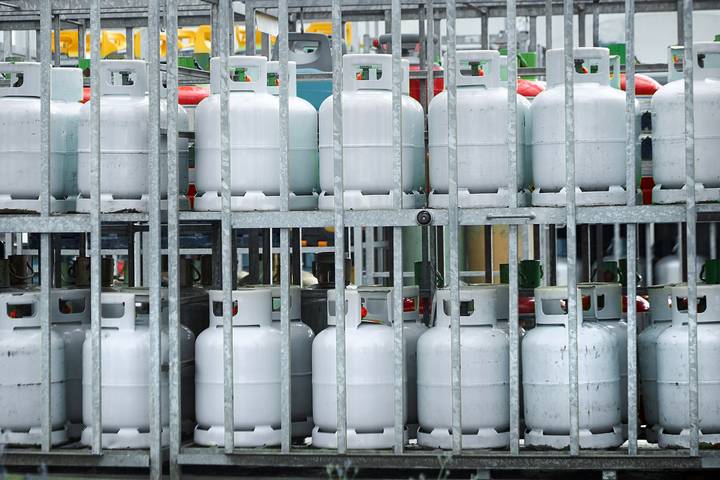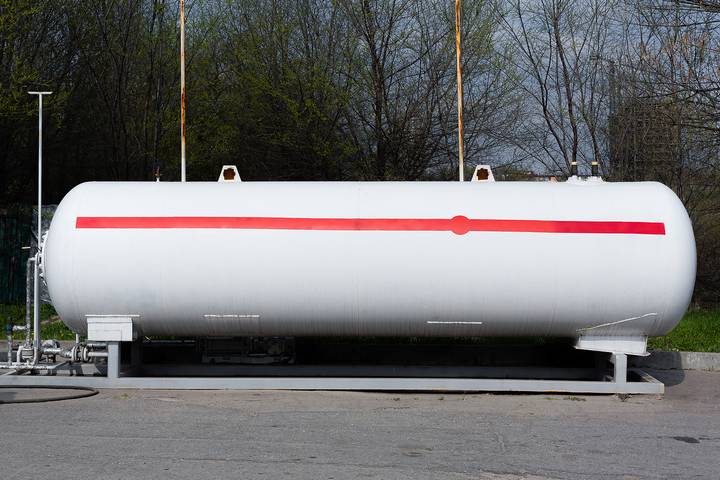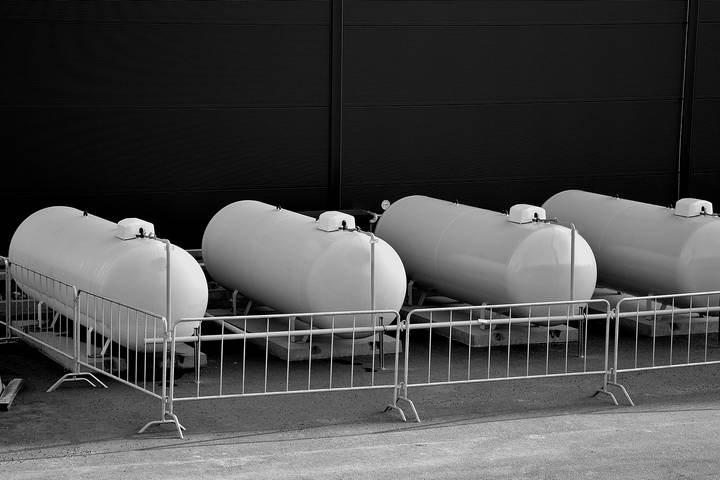
We use propane for many fuel-related needs. It can be pumped into our vehicles, delivered to our homes, or stored in portable containers for home and job site applications. It is a stable, safe product you have probably used many times.
Are you in need of propane and wondering how much to get? Your fuel requirements will dictate the propane tank sizes you need. A larger tank may be best if you experience regular high-volume requirements, as this lessens the need for constant refills. In contrast, a smaller tank could be adequate for sporadic use or setups with lower fuel intake rates.
Here are five different types of propane tanks and their characteristics.
Type #1: Refillable Tanks

A refillable tank is the most common tank type. Large tanks are mounted on concrete pads for heating buildings and are filled by a truck coming to your home or business. Smaller containers power equipment like forklifts. They are easily exchanged for empty bottles picked up and full ones dropped off by a propane company.
You can also have smaller sizes that fit under your BBQ and allow summer grilling. You can purchase these tanks and get them topped up at a filling station or exchange them for a new one. There are even small, 1 lb refillable tanks for camping use.
Type #2: Disposable Tanks
Disposable propane tanks are ones you purchase from a store, use and discard. These tanks are not made to be refilled as they have thin metal walls. Their valves are also not designed to refill. They are ideal for small burning needs, like portable BBQs and lanterns. They are famously lightweight and easy to pack.
These types of propane tanks can be easily found at various grocery stores and gas stations, offering great convenience to consumers. However, their environmental impact is significant, as they contribute to the ever-growing landfill issue due to their non-biodegradable nature compared to regular waste. It’s wise to take these tanks to a specialized waste collection facility or a recycling depot instead.
Propane tanks can be found in two distinct configurations: horizontal and vertical. Embrace a more eco-friendly mindset while enjoying the versatility these tanks provide.
Type #3: Horizontal Propane Tanks

Horizontal propane tanks are elongated storage units specifically created to hold propane gas. The distinct shape of these tanks allows them to easily fit in areas with limited vertical clearance, like crawl spaces and beneath decks. They ensure a steady supply of propane to heating systems, providing warmth and coziness in various settings
These types of propane tanks possess substantial storage capacity, which lessens frequent refills. They are suitable for properties with high heating requirements. This efficiency reduces disruptions and adds convenience. Horizontal tanks are particularly useful in remote areas where access to refilling services may be scarce.
Type #4: Vertical Propane Tanks
Vertical tanks are smaller and can be moved around according to your needs. They can power various small appliances. They can be filled on-site or used for refilling or exchange.
Their upright stance makes them a remarkably efficient option for conserving space in locations facing horizontal limitations. These tanks provide a consistent supply of propane to keep heating and cooking appliances running smoothly. Additionally, their sleek vertical design makes them a practical fit for places with limited ground area, such as bustling cities or compact properties.
The upright nature of these tanks aids visual inspections, ensuring propane levels are easily discernible. And when it comes to appliance compatibility, these tanks can accommodate a wide variety, from stoves to water heaters.
Type #5: Other Propane Tanks

You may also adjust the dimensions of your propane tanks based on your needs. Here are some other propane tanks to consider:
20 lb tanks
This is your standard BBQ tank that is around 18″ tall and 12″ wide. It holds 5 gallons of propane fuel and is easy to carry. They can be refilled or exchanged as needed.
20 lb tanks come with an overfill prevention device valve. This three-lobbed hand wheel has safety features that prevent overfilling, monitoring the amount of propane in the tank. They are required for tanks that hold between 4 and 40 lbs of propane.
100 lb tanks
You can get a 100 lb tank for a larger tank that lasts longer. These stand 4′ tall and are around 18″ across, holding 25 gallons of fuel. It is still considered portable but challenging to maneuver. These work well in a home with a mixed heating system with propane for heat. They are also used for outdoor fireplaces and large grills.
120 lb tanks
This large tank fills appliances like stoves, dryers, fireplaces, as well as space heaters. They are suitable for cabins but not designed to heat your entire home. They can be placed up in a building and connected in multiples if more fuel is required.
Larger tanks
These home and business heating tanks range from 300 to 1000 gallons and are large capacity. They provide longer fuel and are torpedo-style tanks installed around 25′ from a building for permanent stability and safe use. Depending on size and aesthetics, these tanks can be above or below ground, and they are refilled at their location.
